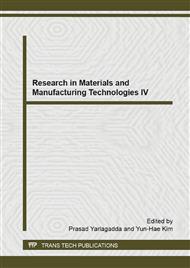p.935
p.939
p.945
p.950
p.961
p.966
p.970
p.974
p.978
Properties of Films Characterized by Scanning Acoustic Microscope
Abstract:
The scanning acoustic microscope is used to detect the properties of films. The ultrasonic wave propagates in the films with thickness h, acoustic impedance Z2 between medium with acoustic impedance Z1. The echoes from upper and lower interfaces overlap and interfere. The echoes are transformed by FFT. The interference phenomena are observed in amplitude spectrum of echoes. The spectrum has periodic extreme values at fn, fn=nc/2h. When thickness h is known, sound velocity c2 of film can be calculated. According to the principle, the properties of films such as thickness, acoustic impendence and elastic modulus are evaluated by scanning acoustic microscopy. The experimental results are good accorded with the actual properties of specimens.
Info:
Periodical:
Pages:
961-965
Citation:
Online since:
December 2014
Authors:
Price:
Сopyright:
© 2015 Trans Tech Publications Ltd. All Rights Reserved
Share:
Citation:


